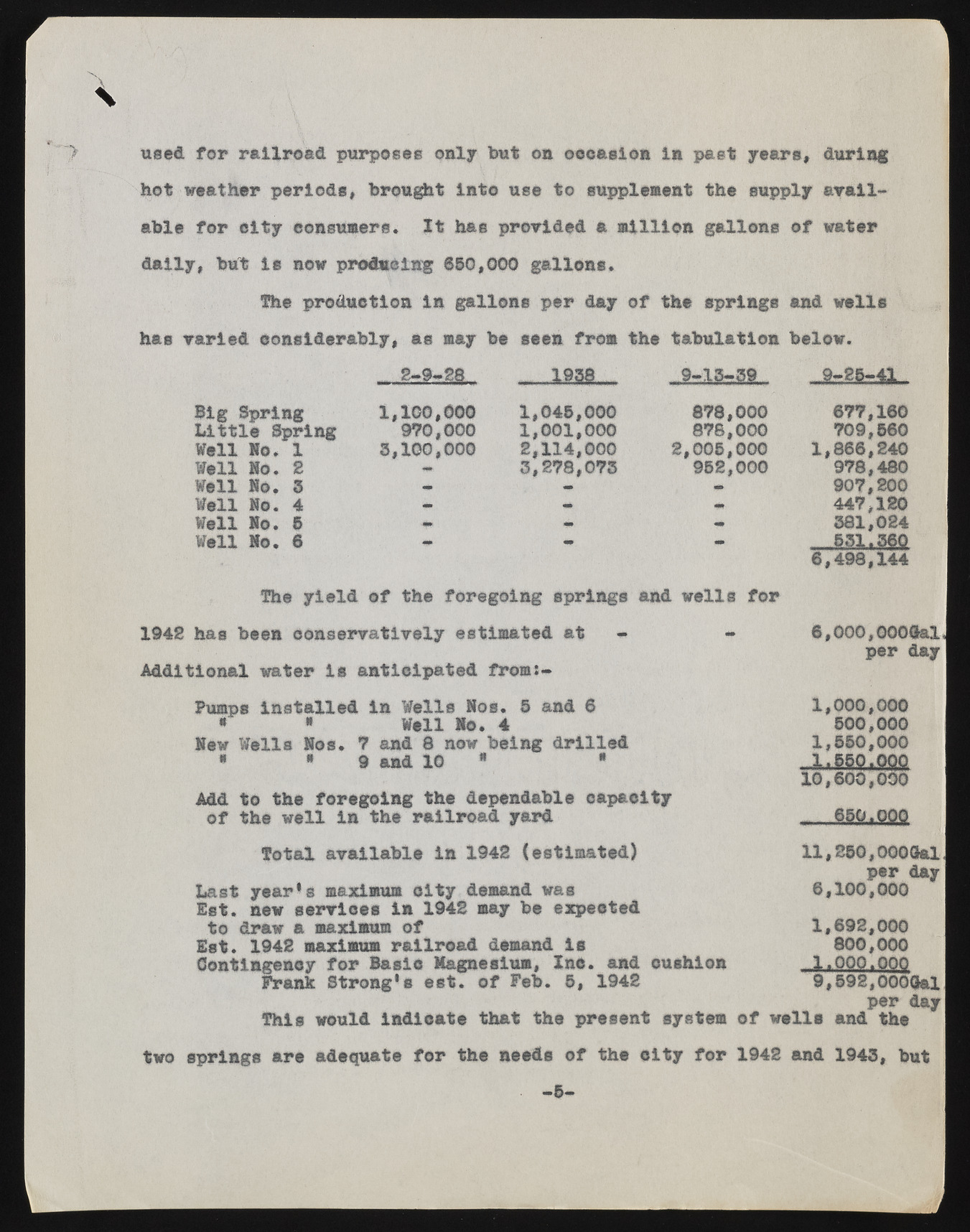Copyright & Fair-use Agreement
UNLV Special Collections provides copies of materials to facilitate private study, scholarship, or research. Material not in the public domain may be used according to fair use of copyrighted materials as defined by copyright law. Please cite us.
Please note that UNLV may not own the copyright to these materials and cannot provide permission to publish or distribute materials when UNLV is not the copyright holder. The user is solely responsible for determining the copyright status of materials and obtaining permission to use material from the copyright holder and for determining whether any permissions relating to any other rights are necessary for the intended use, and for obtaining all required permissions beyond that allowed by fair use.
Read more about our reproduction and use policy.
I agree.Information
Digital ID
Permalink
Details
More Info
Rights
Digital Provenance
Publisher
Transcription
used for railroad purposes only but on occasion In past years, during hot weather periods, brought into use to supplement the supply available for city consumers. It has provided a million gallons of water dally, but is now producing @50,000 gallons. The production in gallons per day of the springs and wells has varied considerably, as may be seen from the tabulation below. gftIMB L -. 9-13-59 9-25-4?. Big Spring Little Spring Well Ho. 1 Well Ho. 2 Well Ho. 5 Well Ho. 4 Well No. 5 Well Ho. 6 1,100,000 970,000 3,100,000 1.045.000 1.001.000 2,114,000 3,278,073 878.000 878.000 2,005,000 952.000 677,160 709,560 1,866,240 978,480 907,200 447,120 331,024 -6,J4l9S8,U1t4tf4l The yield of the foregoing springs and wells for 1942 has been conservatively estimated at Additional water Is anticipated froms- 6,000,0000a! per day Pumps installed In Wells Nos. 5 and 6 * ? Well Ho. 4 Hew Wells Hos. 7 and 8 now being drilled " * 9 and 10 * * Add to the foregoing the dependable capacity of the well in the railroad yard 1,000,000 500,000 1,550,000 10,600,000 ____ Total available In 1942 (estimated) Last year's maximum city demand was Est. new services in 1942 say be expected to draw a maximum of 1st. 1942 maximum railroad demand is Contingency for Basic Magnesium, Inc. and cushion Prank Strong's est. of Feb. 5, 1942 ll,250,0000al per day 6 ,100,000 1,692,000 800,000 1 .000.009 9,592,0000a! per day This would indicate that the present system of wells and the two springs are adequate for the needs of ths city for 1942 and 1943, but -5 -

